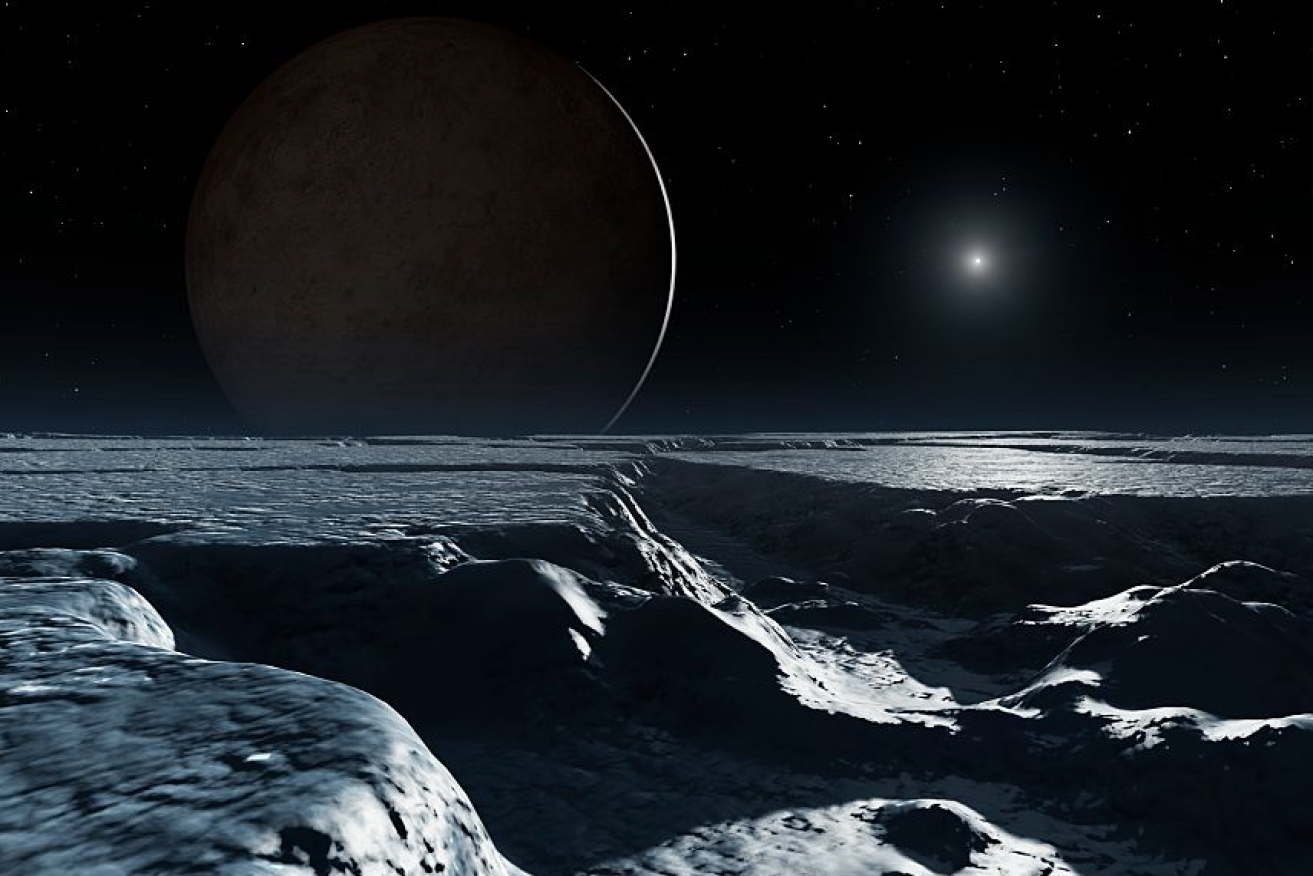A new dwarf planet discovered at the edge of our solar system


Pluto has another dwarf planet to keep it company at the edge of our universe with the discover of UZ224. Photo: Getty
A new dwarf planet has been discovered at the outer reaches of our solar system, 13.7 billion kilometres from the Sun, twice as far as Pluto.
About 530 kilometres across, the new dwarf planet – known as 2014 UZ224 – could be driven around in a single day, once you get there.
You’d never get to celebrate the new year, however, as it takes 1100 years for it to orbit the Sun.
It’s the fourth dwarf planet beyond Neptune to be discovered in the last decade, since Pluto – also a dwarf – was controversially downgraded. The others are Sedna, Eris and Makemake.
A sixth dwarf, Ceres, the largest object in the asteroid belt that lies between the orbits of Mars and Jupiter, with a diameter approximately 945 kilometres, was discovered in 1801.
UZ224 was found by Professor David Gerdes of the University of Michigan, a particle physicist who helped develop the Dark Energy Camera that the US Department of Energy uses to map distant galaxies.
The Dark Energy Camera is mounted on the Blanco Telescope at the Cerro Tololo Inter-American Observatory in the Chilean Andes.
Prof Gerdes was engaged in searching for the theoretical Planet Nine – a planet 10 times more massive than Earth thought to exist at the edge of the solar system and a potential cause of our eventual cosmic demise. When visited by undergraduate students a number of years ago, Prof Gerdes challenged them to find new outlying objects in our solar system.
Because they’re so far away, stars and galaxies don’t appear to move; although they’re caught in the expanding drift of the universe, they essentially form a stationary backdrop. Finding a planetary object, means detecting and tracking movement against that backdrop – and with closer objects, this can happen on a night by night basis of joining the dots.
The furthest planets and asteroids can also seem to be stationary too – and, as was the case of UZ224, it can take weeks to months to detect and track.
“We often just have a single observation of the thing, on one night,” Prof Gerdes told America’s National Public Radio. “And then two weeks later one observation, and then five nights later another observation, and four months later another observation. So the connecting-the-dots problem is much more challenging.”

The orbit of UZ224 takes 1100 years travel around the Sun. Source JPL Horizons
Not only was UZ224 at a great distance, it was small, even for a dwarf – and Prof Gerdes is expecting some scientists to challenge its newly conferred status, based on its size.
However, a dwarf planet isn’t defined by a minimum size, but on its gravitational pull.
According to a checklist created by the International Astronomical Union, a dwarf planet is a celestial body that (a) is in orbit around the Sun, (b) has enough gravity to pull its shape more or less into a ball (c) has not cleared other objects out of its orbit and (d) is not a satellite.








